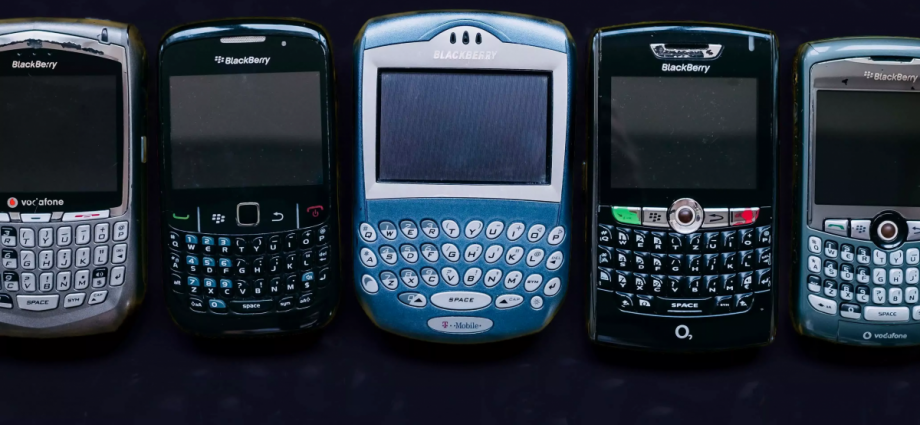The iPhone is arguably the device that brought smartphones into the mainstream, but it took Apple several years to become the number one phone maker in North America. There was no Samsung Galaxy to contend with at the time, but a company that sold smartphones that looked much more like a tiny laptop. But, let’s go further back in time…
In 1996, a relatively unknown Canadian company called Research in Motion (also known as “RIM”) released the Inter@ctive Pager 900, a two-way beeper that could be seen as a more compact alternative to the brick-style cell phones of that era.
The device also had email capabilities. It offered a screen made of 132 x 65 pixels, a PC-like QWERTY keyboard and a mouse-like scroll wheel. The improved 950 model was later renamed BlackBerry as its keyboard resembled the fruit.
The first BlackBerry phone came later in 2002, called the 5810, the device actually required a headset to work as a phone. A year later, did RIM release a device that looked like a phone with the Quark series. Among its specifications were a black-and-white display of 160 x 100 pixels, 2 MB of RAM, and 16 MB of storage. Its main competition was the Palm Treo series.
The BlackBerry 7000 series added color and higher resolutions (240 pixels wide) later that year. The Bluetooth-supporting Charm series, with a narrower and sharper 260 x 240 display, was a true competitor to cell phones of 2004, which had become far more compact.
Back then, most cell phones used predictive text technologies such as T9, with each of the number keys representing 3 or 4 letters in an alphabetical order, and the * key was used for scrolling between word suggestions.
RIM found a middle ground with SureType technology: each key represented 2 letters, retaining the QWERTY layout and greatly improving prediction accuracy, with the scroll wheel allowing more intuitive scrolling.

Those who missed the full keyboard got the Electron series in 2005, with a wider 320 x 240 screen and support for MP3 ringtones. Part of its success could be attributed to the new BlackBerry Messenger app. The addictive nature of mobile messaging helped coin the term CrackBerry.
The following year, the Windows Mobile-based Motorola Q series joined the competition. In Europe, Nokia’s Eseries started featuring QWERTY keyboards. Phones with keyboards had clearly become a status symbol among businesspeople.
Later in 2006, the SureType-based Pearl series replaced the scroll wheel with a trackball for mouse-like navigation, and added a camera, a media player and multimedia messaging. In 2007, the Curve series combined the trackball with a full keyboard. Both of these models were among the first to hit the mainstream for BlackBerry, solidifying their position in the mobile market.
First of Its Type: The Messaging Wildcard
BlackBerry phones existed in an era when text messaging via SMS was extremely popular and the transition had not yet taken place to today’s prominent messaging applications like WhatsApp, Facebook Messenger, or iMessage.
BBM or BlackBerry Messenger was a highly relevant and popular messaging platform in many countries – and in some places it was simply the norm. BBM was exclusively available on BlackBerry devices, which made it a unique selling point for the brand. This exclusivity helped strengthen the BlackBerry community, as users had to own a BlackBerry device to be part of this messaging network (users found each other in the network using a “PIN” number).

BBM was among the first messaging platforms to offer real-time delivery and read receipts, which allowed users to know when their messages had been delivered and read by others. Compared to SMS texts, BBM was also more cost-effective as you didn’t get charged by the message. Often, BlackBerry data plans sold through carriers were charged as a flat fee for unlimited email, messaging and other internet features.

